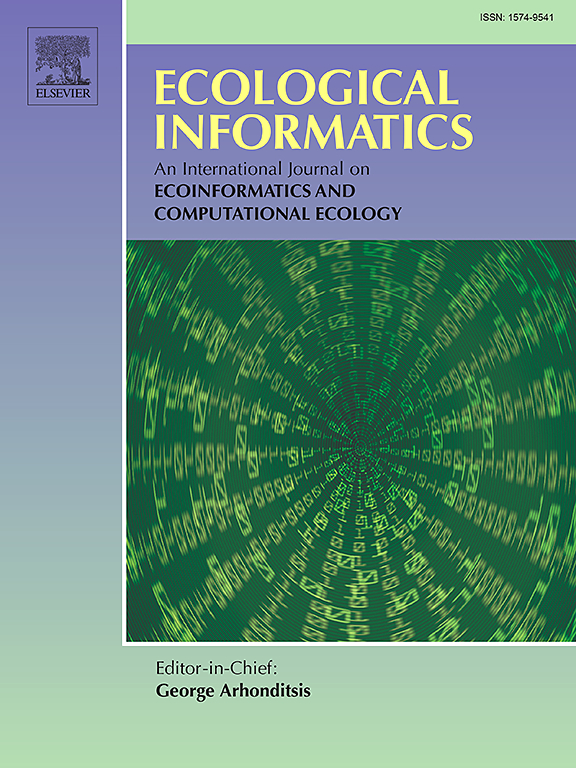河流底栖大型无脊椎动物分布模式对干旱相关条件的可转移性
IF 7.3
2区 环境科学与生态学
Q1 ECOLOGY
引用次数: 0
摘要
包括河流和溪流在内的淡水生态系统日益受到气候变化引起的极端事件的威胁,例如干旱,这些事件破坏了水文过程和生物多样性。物种分布模型(SDMs)是预测物种对环境变化响应的基础。然而,可持续发展武器在其训练条件之外的可转移性,例如从无干旱到受干旱影响的情景,仍然有限。这些受干旱影响的条件为模型提供了新的环境条件,对准确预测提出了挑战。本研究通过四种建模技术(广义线性模型(GLMs);空间流网络;随机森林(RF)和最大熵(MaxEnt))和物种容忍度评分来评估这些因素如何独立和共同影响模型可转移性。可转移性评价基于精度差距(AUC差距/TSS差距),该差距量化了干旱和干旱条件之间的性能差异。我们的研究结果显示,在干旱影响的条件下,模型的性能显著下降,突出了在新环境中预测物种分布的挑战。SDM的可转移性因物种的耐受性而异,耐受性物种的可转移性较低。此外,SSN和RF模型对特定容差的可转移性稍强,这表明它们在模拟水文压力下物种反应方面具有潜力。我们的研究强调了传统SDMs在捕获物种对极端水文事件(如干旱)的响应方面的局限性,并主张整合生态相关预测因子(如河流连通性)并考虑SDMs中的物种特征,以提高在新环境情景下的预测准确性。本文章由计算机程序翻译,如有差异,请以英文原文为准。
Transferability of stream benthic macroinvertebrate distribution models to drought-related conditions
Freshwater ecosystems, which include rivers and streams, are increasingly threatened by climate change-induced extreme events, such as droughts, which disrupt hydrological processes and biodiversity. Species distribution models (SDMs) are essential for predicting species responses to environmental change. However, the transferability of SDMs beyond the conditions under which they were trained, such as from drought-free to drought-influenced scenarios, remains limited. These drought-influenced conditions represent novel environmental conditions for the models, posing challenges for accurate predictions. This study investigated the transferability of SDMs for freshwater macroinvertebrates from drought-free to drought-influenced conditions in a central German catchment via four modeling techniques (generalized linear models (GLMs); spatial stream networks (SSNs); random forests (RF) and maximum entropy (MaxEnt)) and species tolerance scores to assess how these factors independently and jointly affect model transferability. The transferability is evaluated on the basis of the accuracy gap (AUC gap/TSS gap), which quantifies performance differences between drought-free and drought conditions. Our findings reveal a marked decline in model performance under drought-influenced conditions, highlighting the challenges of predicting species distributions in novel environments. SDM transferability varied by species tolerance, with tolerant species exhibiting lower transferability. Additionally, SSN and RF models demonstrated slightly greater transferability for specific tolerances, suggesting their potential for modeling species responses under hydrological stress. Our study underscores the limitations of conventional SDMs in capturing species responses to extreme hydrological events, such as droughts, and advocates for integrating ecologically relevant predictors (such as stream connectivity) and accounting for species traits in SDMs to increase predictive accuracy in novel environmental scenarios.
求助全文
通过发布文献求助,成功后即可免费获取论文全文。
去求助
来源期刊

Ecological Informatics
环境科学-生态学
CiteScore
8.30
自引率
11.80%
发文量
346
审稿时长
46 days
期刊介绍:
The journal Ecological Informatics is devoted to the publication of high quality, peer-reviewed articles on all aspects of computational ecology, data science and biogeography. The scope of the journal takes into account the data-intensive nature of ecology, the growing capacity of information technology to access, harness and leverage complex data as well as the critical need for informing sustainable management in view of global environmental and climate change.
The nature of the journal is interdisciplinary at the crossover between ecology and informatics. It focuses on novel concepts and techniques for image- and genome-based monitoring and interpretation, sensor- and multimedia-based data acquisition, internet-based data archiving and sharing, data assimilation, modelling and prediction of ecological data.
 求助内容:
求助内容: 应助结果提醒方式:
应助结果提醒方式:


